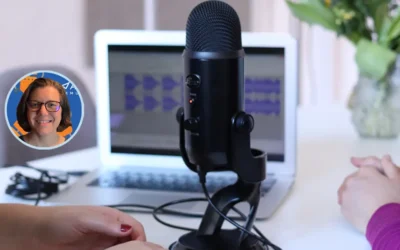Want to Know What Your End Users are Thinking?
Lauren Hays
As you think about the needs of your users, you may be wondering how best to obtain data that will inform changes in your special library, museum, or archive. There are many types of data collection methods including: interviews, observations, focus groups, and surveys. Read on for my survey design secrets.
Now, survey fatigue is a real thing so I do not encourage over-surveying organizational stakeholders. However, surveys are an expedient way to gather data. They allow you to ask many different types of questions and keep the data organized in a central system.
Furthermore, surveys:
- are inexpensive to implement
- allow you to reach a broad audience
- allow for response anonymity
Despite the benefits of surveys, they can be tricky to create. You need to make sure each question is worded in such a way that you are gathering the feedback you desire. Surveys also need to be long enough to gather necessary data, but short enough that people do not stop prior to completion. When I have used surveys, I have found them to be very helpful—but only if I spent the necessary time upfront designing the survey to capture the information I needed. When I was not as thorough in my survey preparation I ended up with data, but unfortunately, data that did not always help me make decisions.
Tips for designing a survey:
- Identify objectives prior to starting survey development. If the objectives are not clear it is impossible to know the questions you need to ask. I recommend no more than four specific objectives.
- All survey questions should align with a specific objective. This will help keep the survey an appropriate length. Strong alignment between the questions and the objectives also aids in the data analysis process. You know which question(s) help you make which decisions.
- Identify the specific audience to whom you will send the survey. Consider who you need to hear from in order to meet your objectives.
- Explain to the audience the objectives of the survey. In other words, explain to your audience why they should take time to complete the survey. When possible, share how the survey results will be used and how the results will directly benefit them.
- Write questions that are clear and do not overuse jargon specific to special libraries.
- Do not ask multi-part questions. (e.g. What database is the easiest to use and has the most resources for your needs?)
- Do ask single questions. (e.g. What database is the easiest to use? What database has the most resources for your needs?)
- Use Likert Scale questions when possible. Likert scales provide detailed data without the survey participant having to identify their own words.
- Complete a test of the survey prior to broad distribution. Recruit a few stakeholders from your identified audience to complete the survey and note anything that did not make sense. Based on their feedback, make changes.
- Create space for open-ended responses. I have written survey questions and identified possible responses that did not express the range of feedback stakeholders wanted. Creating space for the option of “Other” and then a blank is a good practice.
Tips for analyzing survey data:
Once you develop your survey and collect data, the next step is to analyze that data. This needs to be completed in a thoughtful way as well.
- Pay attention to the number of responses for each question. Some questions may have received more responses than others. Do not think 95% of respondents means the same thing for each survey question.
- Know how many responses you received versus the size of your identified audience. Too often I have seen decisions made when only a small portion of an audience responded to a survey. Instead, understand how many voices you heard from and make decisions accordingly.
- Keep in mind the context of the data. If you send an annual survey, it is important to compare data year to year. This type of longitudinal data will help you know how people’s thoughts/feelings have changed over time.
- Look at both individual question responses and the big picture. You will want to review the data for each individual question. You will also want to look at the data in its entirety. Individual questions cannot tell the entire story of your audience’s thoughts, feelings, and opinions. At the same time, only reviewing compiled data cannot tell you where both successes and areas for improvement exist.
- When changes are made based on survey findings, explain to your audience how the changes were decided.
When implemented well, surveys are a great way to inform decisions in special libraries. They also help organizational stakeholders know they have a voice.
Lauren Hays
Lauren Hays, PhD, is an Assistant Professor of Instructional Technology at the University of Central Missouri. Previously, she worked as an Instructional and Research Librarian at a private college in the Kansas City metro-area. Prior to working in higher education, she was employed by the National Archives and Records Administration and worked as an intern at the Harry S. Truman Presidential Library & Museum. Please read more on Lauren’s skills for special librarians, and you may want to take a look at Lucidea’s powerful ILS, SydneyEnterprise.
Similar Posts
How to Incorporate Interns in Museum CMS Projects: Data Cleanup and Refinement
A museum expert details how interns can be successfully included in museum CMS projects at the data cleanup and refinement stage.
Interview with Susannah Barnes about the SLA Data Community
Susannah Barnes is the Co-Lead of the Data Community for the Special Libraries Association. If you work with data in any capacity, this interview will be of interest to you.
Enhancing Collaboration; Methods for Archivists
Archivists can enhance collaboration through user-centric approaches and efficient processing methods based on customer service principles.
Lucidea’s Lens: Knowledge Management Thought Leaders Part 67 – Shawn Callahan
KM Thought Leader Shawn Callahan helps analytically-minded executives tell stories that ultimately inspire action from employees and customers.
Hosting service
Enjoy all of the benefits of your Lucidea solution with secure, reliable, stress free hosting
Programs & incentives
No matter your size or budget, we’ve got you covered, today and tomorrow




Leave a Comment
Comments are reviewed and must adhere to our comments policy.
0 Comments